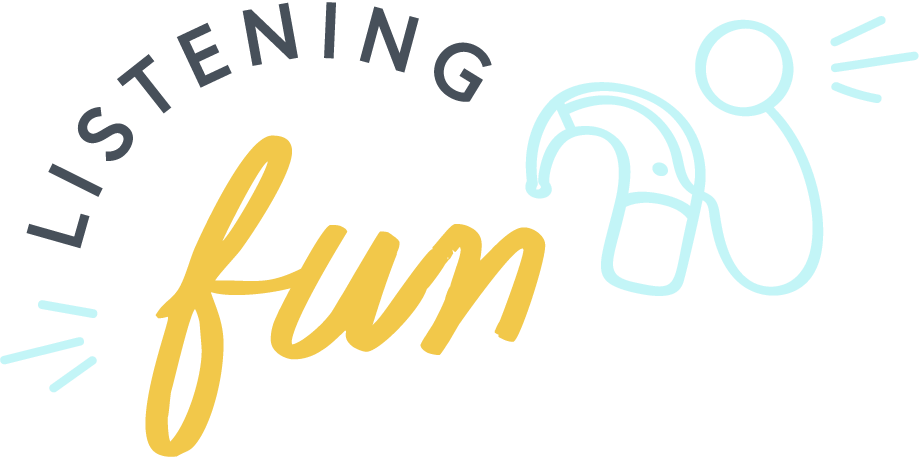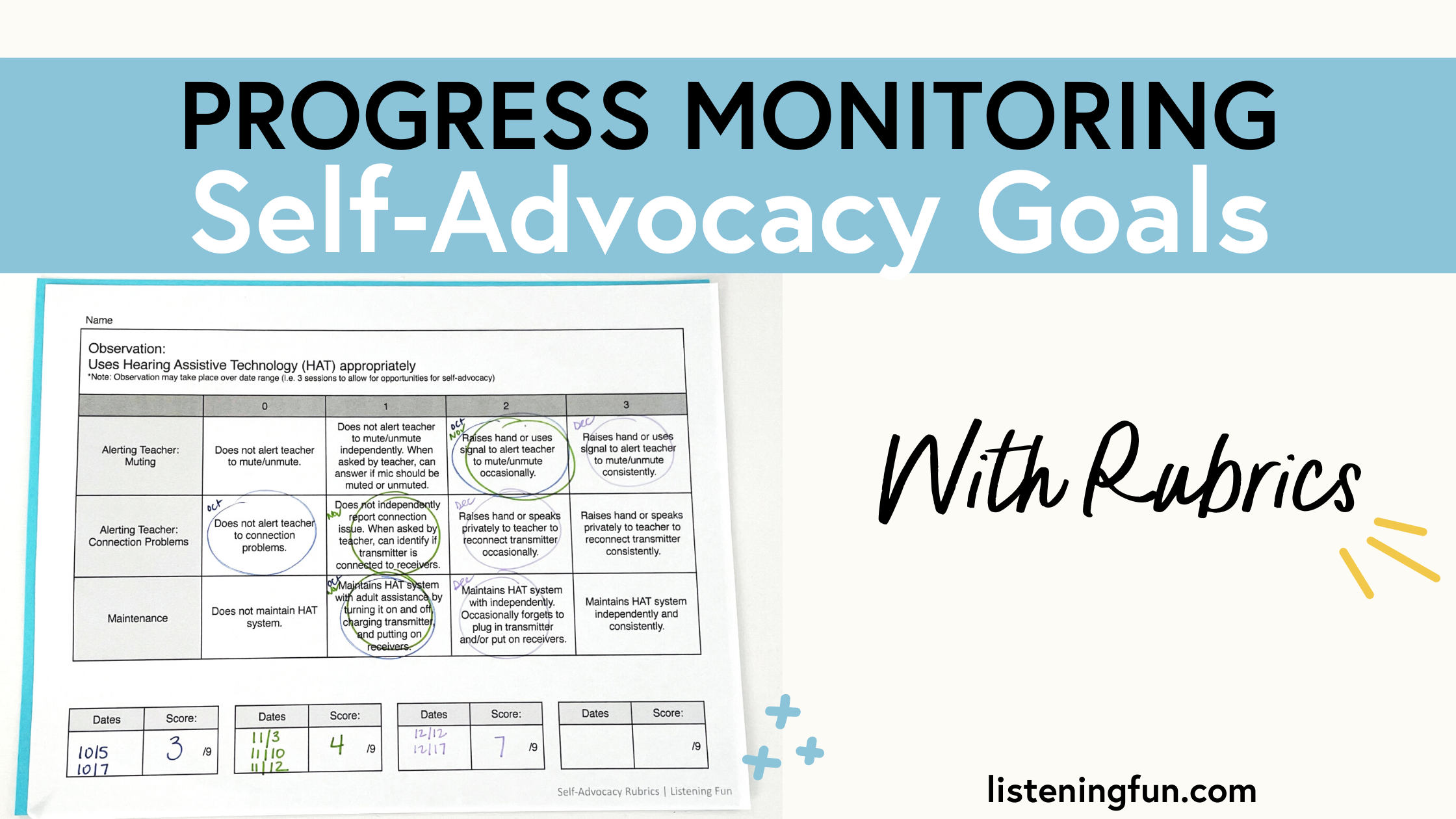Progress Monitoring Self-Advocacy Goals
Taking Data on Self-Advocacy
Progress monitoring can be challenging for self-advocacy goals. Self-advocacy skills may be practiced in individual sessions but are most important in the classroom and in social settings. I have developed these progress monitoring rubrics to help quantify these skills and show progress over time.
The Self-Advocacy Rubrics are designed for itinerant Teachers of the Deaf and students using primarily listening and spoken language in mainstream schools. These rubrics are not age specific. Skills range from early elementary to high school level.
Progress Monitoring Tools
There are two types of rubrics: skill rubrics and observation rubrics.
Self-Advocacy Skill Rubrics:
These rubrics focus on content. They are meant to be used during sessions periodically to document growth in a particular skill area. Multiple date/score boxes are provided. I recommend using one rubric per student and taking data on the skill periodically to monitor progress. I circle the boxes, write the date, and total the score at the bottom. These rubrics are helpful for self-area topic areas such as: Understands own hearing devices, understands own hearing loss, understands and interprets information on an audiogram, etc.
If a student is new to me, I usually start with one of these topics/rubrics. I want to make sure that the student understands the vocabulary and information before I ask them to apply that information. I might spend a few sessions teaching a student the correct vocabulary of the parts of his HAT system, practice listening to the difference when it’s working or not working, discuss different problems that can occur, etc. before asking him to report issues to his teacher independently.
Based on this rubric, I could report in a progress report:
Ben’s understanding of his HAT system has improved. His baseline score on a teacher made rubric was 3/9. He was able to name 1-2 parts of his devices, troubleshoot one problem (dead battery), and explain that his HAT system helps him hear. Ben benefited from direct instruction on vocabulary, role playing, and discussion based lessons to learn more about his HAT system. On September 28, 20XX Ben scored 9/9. He is able to name all parts of his HAT system, troubleshoot a variety of problems (including dead battery, cleaning receivers, reconnecting), and clearly explain the benefits of the HAT system to familiar teachers and substitutes.
Classroom Observation Rubrics:
The second type of rubrics are observation rubrics . These rubrics can be used to take data during classroom observations, in order to take data on skills being applied in the classroom. Since it can be difficult to observe many skills in one session, it is recommended the rubric be completed over a date range (for example, 2 or 3 consecutive sessions). This can be noted in the date/score box.
To continue the example from above: Once the student is comfortable with the vocabulary and demonstrates understanding of his HAT system, I can use an observation rubric to take data on his application of these skills. Sometimes I observe for 10-15 minutes before pulling for an individual session, and sometimes I push in and join the class for an activity. I find this flexibility is helpful.
Based on this rubric, I could report in a progress report:
Ben has been practicing applying his knowledge of his HAT system to the classroom. In October he scored 3/9 on the HAT observation rubric. Ben occasionally asked his teacher to unmute. He did not alert the teacher to connection problems. He maintains his HAT system with adult assistance. During individual sessions, Ben learned appropriate ways to alert his teacher to HAT issues. He practiced various strategies such as raising his hand, using a signal, and speaking to the teacher during independent work. By December, Ben scored 7/9 on the HAT observation rubric. He was observed raising his hand to ask the teacher to mute/unmute consistently. He has been observed speaking privately to the teacher to fix connection issues in 1 of 1 opportunities in December. Ben occasionally needs a reminder to plug in his HAT system at the end of the day, but otherwise uses it successfully.
There are 13 rubrics included in this resource:
Understanding own hearing devices
Uses hearing devices appropriately
Understands Hearing Assistive Technology (HAT)
Understands own hearing loss
Understands and interprets information on an audiogram
Understands factors that impact classroom acoustics and visual access
Prepared for post-high school transition
Uses communication repair strategies in the classroom
Advocates for accommodations
Uses Hearing Assistive Technology (HAT) appropriately
Uses compensatory strategies in the classroom
Classroom Observation: Participation and Advocacy
Teacher Consult: Participation and Advocacy
The document is completely editable in Microsoft PowerPoint, so it is easy to adjust for your student’s needs.
I hope these self-advocacy rubrics make your progress monitoring a little bit easier!





